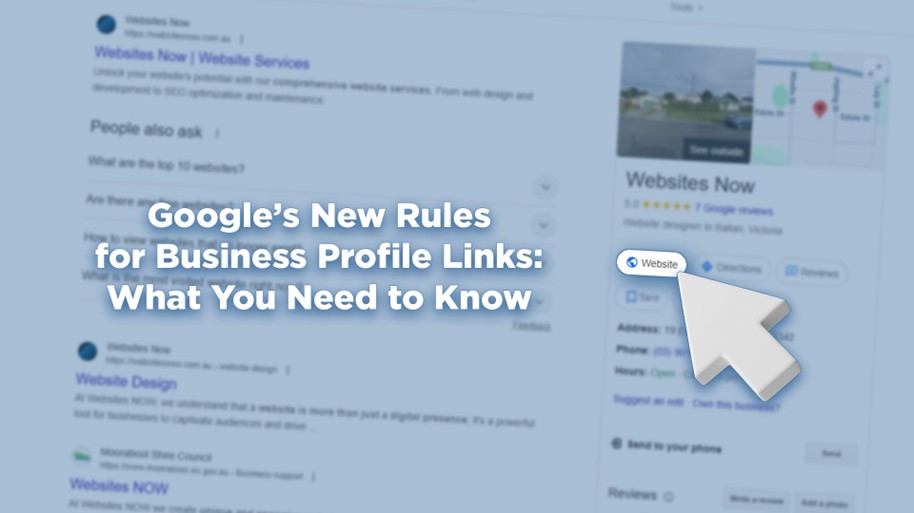When Google says jump…
Most businesses get stuck asking, how high?
If you’ve ever relied on your Google Business Profile (the listing that shows up in Google Maps and search results), you’ll know that little “Website” button packs a lot of punch. It’s where customers go to book, order, or learn more about your business.
Google has just rolled out some pretty big changes to how those links are handled – and it’s worth paying attention.
What’s changed?
Until now, plenty of small businesses got by with linking their Google listing to a Facebook page, or maybe a single homepage covering multiple locations. That’s no longer going to fly.
Google has updated its Business Links Policy, and here are the highlights in plain English:
- Links need to go to a dedicated landing page for your business. If you have multiple locations, each one needs its own page. No more sending everyone to the same generic site.
- If you’ve got an “Order” or “Book” button, it has to lead people to a page where they can actually complete that action – not just read about it.
- Social media pages, app store links, messaging links, and shorteners like bit.ly are no longer allowed as your “website” link.
- Google will crawl your link every day to make sure it works. If the page blocks bots, throws errors, or doesn’t load fully, the link may be removed from your profile.
What this means for your business
For some owners, especially those who’ve only ever used a Facebook page as their “website,” this is a big shift. From now on, you’ll need a proper website – even if it’s just a simple, single-page site – to keep your Google Business Profile fully functional.
For those who already have a website, it’s a nudge to make sure the links on your listing point to the right place: the location page, the booking form, the order checkout. Not a homepage that leaves the customer guessing.
In short: Google wants customers to land exactly where they need to be, and to land on a page that Google itself can verify as safe, accurate, and usable.
So, what should you do?
If you don’t have a website yet, don’t panic. You don’t need a sprawling, 20-page site to stay compliant. A focused landing page that covers the essentials will do the job:
- Clear business details – who you are, what you do, where you’re located, and how to get in touch.
- Action-ready buttons – booking, ordering, or enquiry forms that actually work.
- Accessible to Google – no logins, no CAPTCHAs, no geo-blocking. Just a clean page that loads quickly.
If you already have a website, now’s the time to check your Google Business Profile links. Make sure they point to the correct pages, and that those pages load without errors.
The bottom line
Although it is frustrating to be blindsided by updates like this one – These changes aren’t about making life difficult for small businesses. They’re about trust and user experience. When someone clicks on your link, Google wants them to land on a page that’s clear, functional, and relevant.
If you’re not sure whether your current setup is compliant, or if you need a landing page built quickly, Websites NOW can sort it for you.

